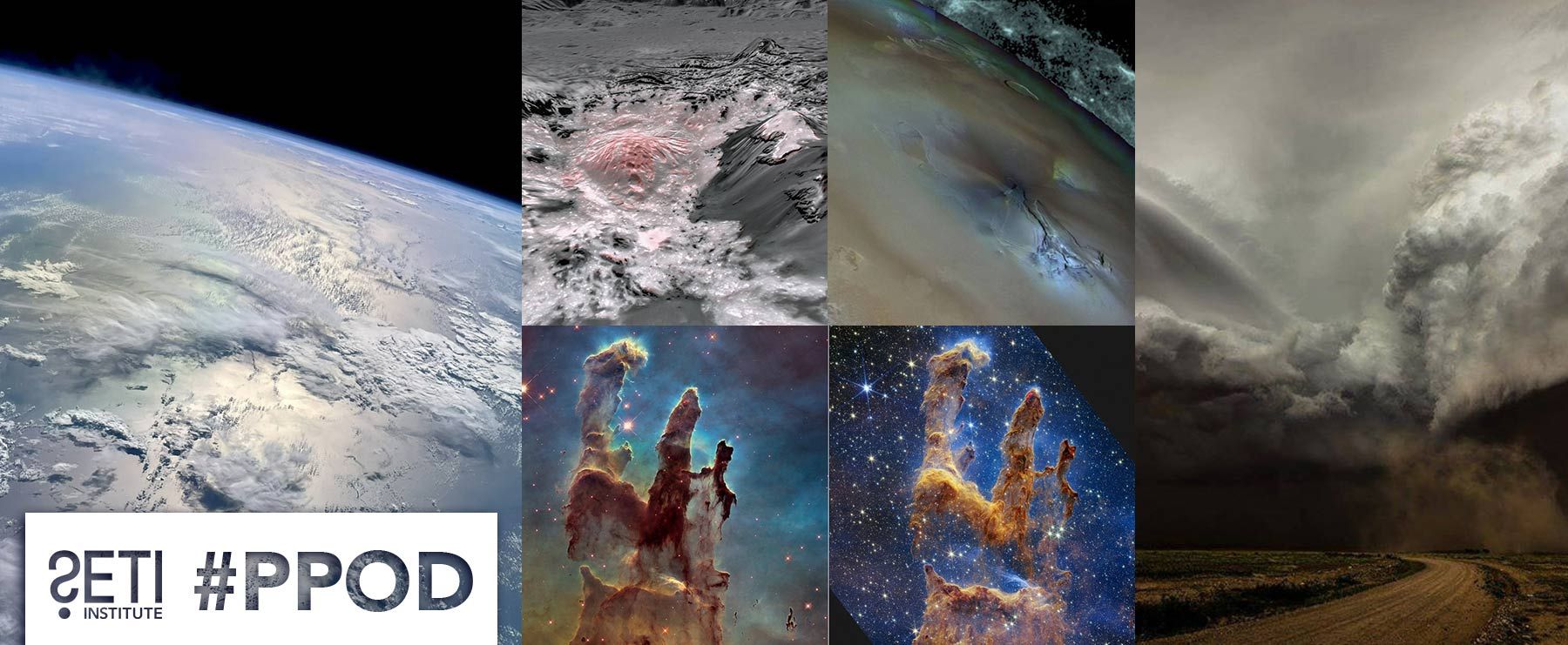
Planetary Picture of the Day
Week of October 17, 2022
Earth, our solar system and beyond –glorious images to reframe our perspective.
Monday, October 17, 2022
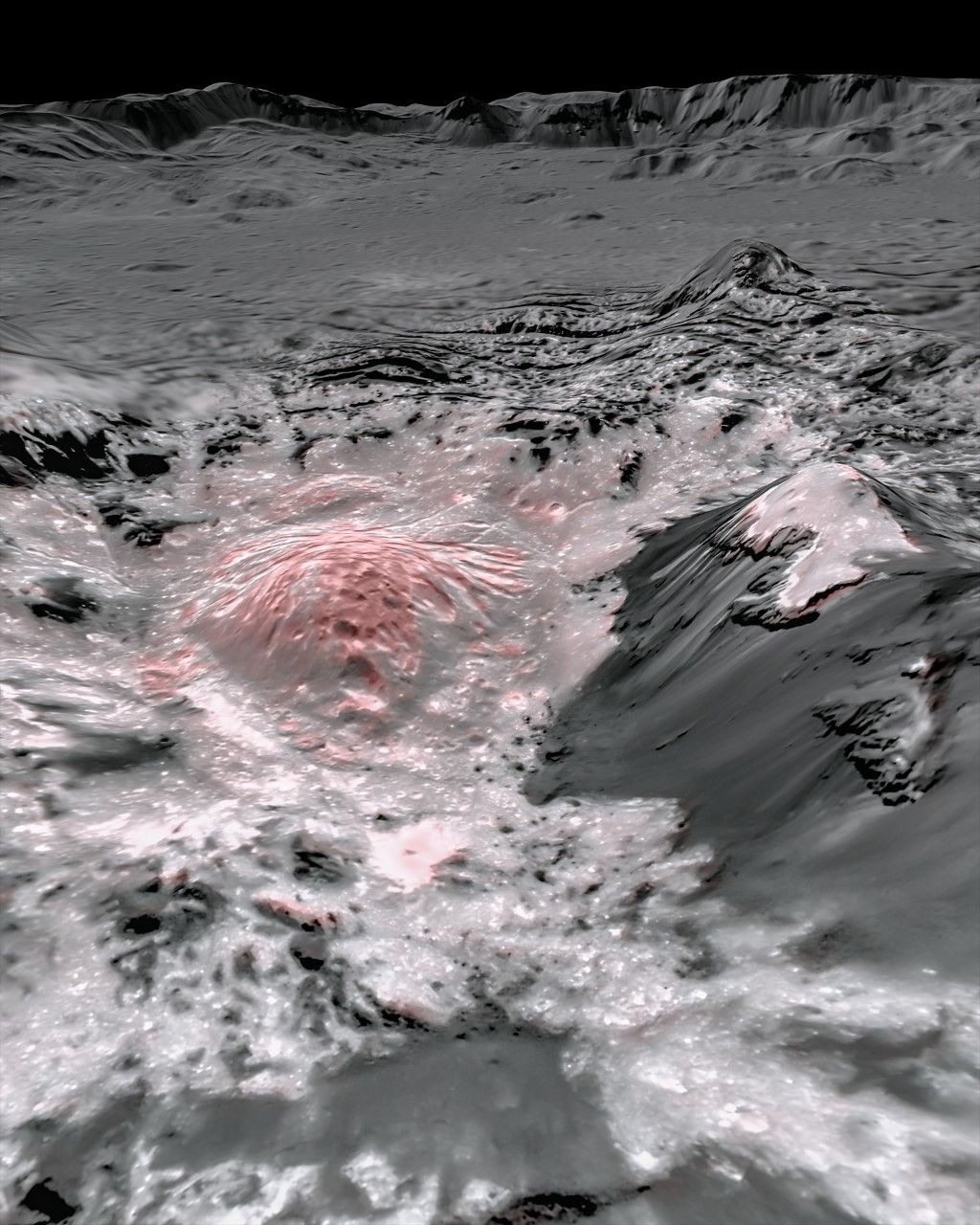
Credit: NASA/JPL-Caltech/UCLA/MPS/DLR/IDA
Processing: Nico Schmedemann, Guni Thangjam and Andreas Nathues
Highlighting Bright Areas of Ceres' Occator Crater
NASA's Dawn spacecraft captured pictures in visible and infrared wavelengths, which were combined to create this false-color view of a region in 92-kilometer-wide Occator Crater on the dwarf planet Ceres (in the main asteroid belt between Mars and Jupiter). Here, recently exposed brine, or salty liquids, in the center of the crater were pushed up from a deep reservoir below Ceres' crust. In this view, they appear reddish.
In the foreground, is Cerealia Facula ("facula" means bright area), a 15-kilometer-wide region with a composition dominated by salts. The central dome, Cerealia Tholus, is about 3 kilometers across at its base and 340 meters tall. The dome is inside a central depression about 900 meters deep. There is a 2x vertical exaggeration.
The area depicted in this scene is about 2.1 kilometers wide in the foreground, about 11 kilometers wide across the dome, and 56 kilometers wide in the background, where the crater rim rises against the black sky. The distance from the near point (at the bottom) to the far point (at the top) is about 52 kilometers.
This mosaic is made from multiple images Dawn captured during its second extended mission in 2018 from an altitude of about 35 kilometers. Those were combined with a topographic map based on images obtained during Dawn's prime mission and first extended mission in 2016, from an altitude of about 385 kilometers.
The resolution varies from about 3.5 meters per pixel in the bright regions to about 35 meters per pixel in the background. The color data that is overlain on the topographic data was obtained during the prime mission in 2015 when the spacecraft was at an altitude of 1470 kilometers. It has a resolution of 140 meters per pixel.
In this close-up view, the scene is about 3 kilometers wide in the foreground and 35 kilometers wide in the background, from rim to rim. The distance from the near point (at the bottom) to the far point (at the top) is about 44 kilometers.
Tuesday, October 18, 2022
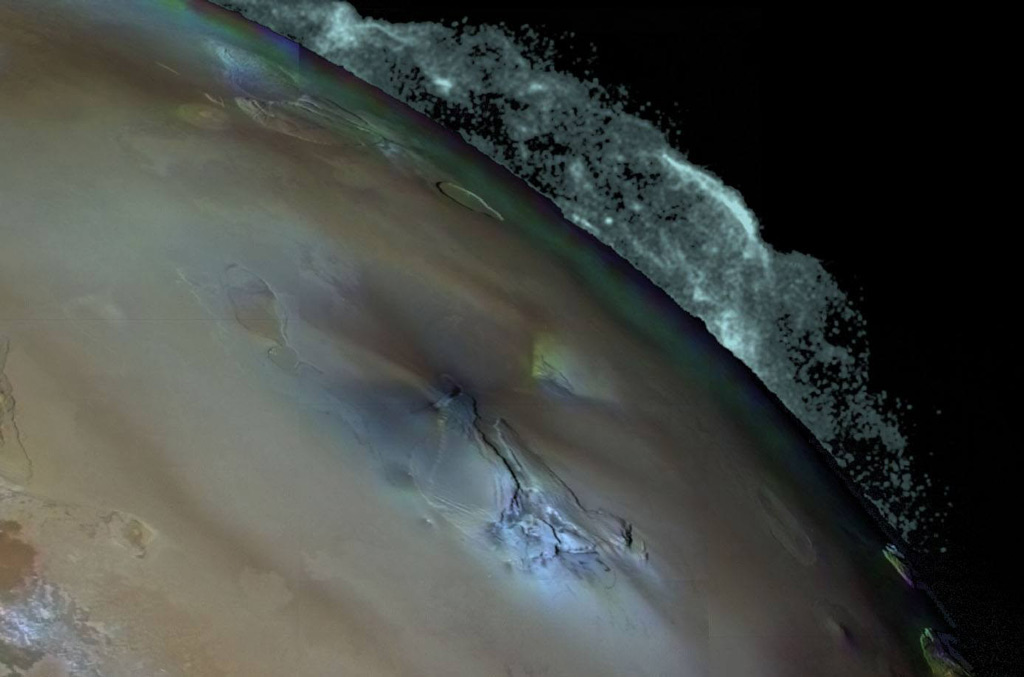
Credit: NASA
You can see the full image at full resolution here: https://buff.ly/3T8DyE5
Alien Volcanoes --- Eruption of Pele on Jupiter's moon Io
This full resolution subframe shows a volcanic plume rising 300 kilometers above the surface in an umbrella-like shape. The plume fallout covers an area the size of Alaska. The vent is a dark spot just north of the triangular-shaped plateau (right center). To the left, the surface is covered by colorful lava flows rich in sulfur.
Wednesday, October 19, 2022
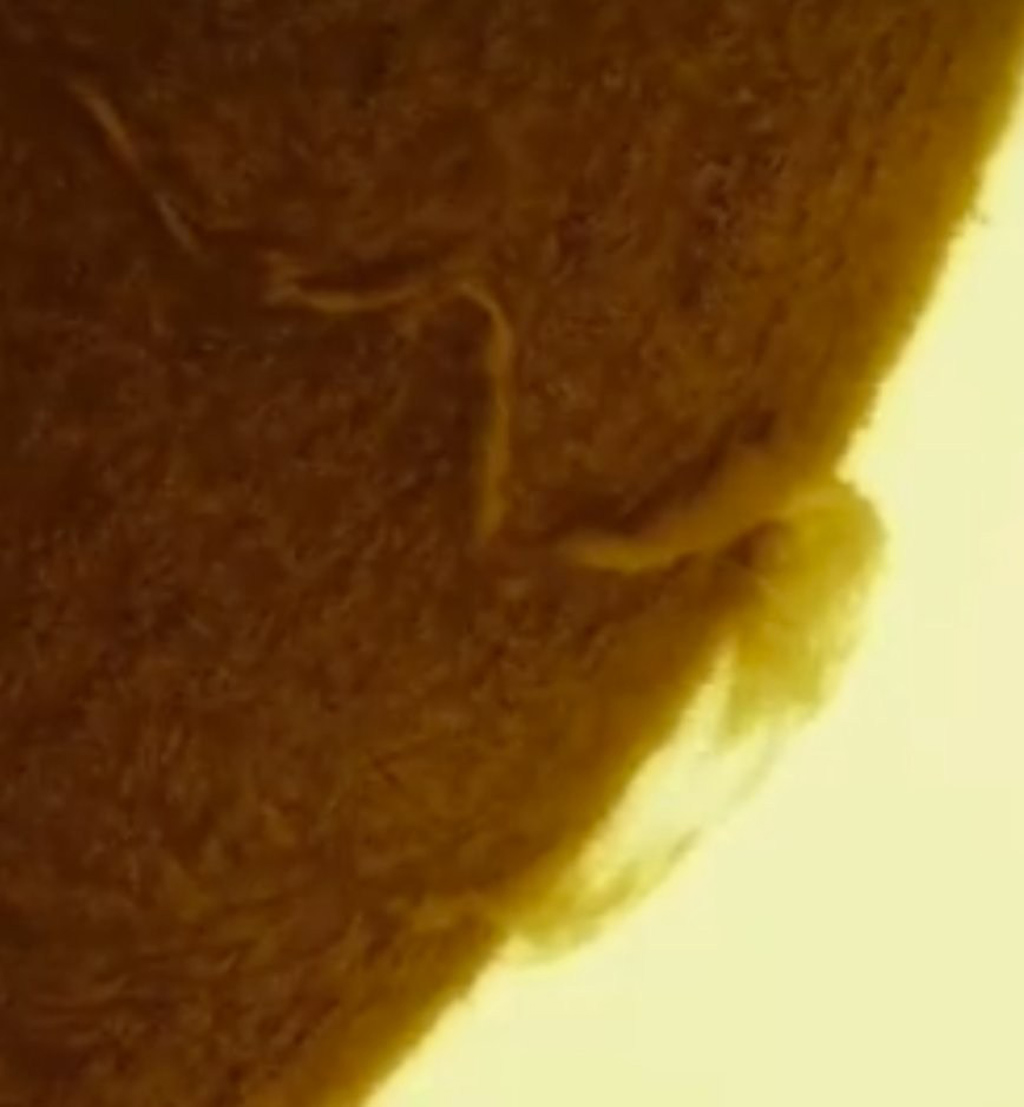
Credit: IG / simon2940
Solar Filament
Stunning image of a filament at the surface of the sun. Per the photographer, "Features on the Sun are not always fast moving, killer flares, and plasma cannons. This calm [filamentary prominence] was hovering on the Sun and just showing off all its details."
Thursday, October 20, 2022
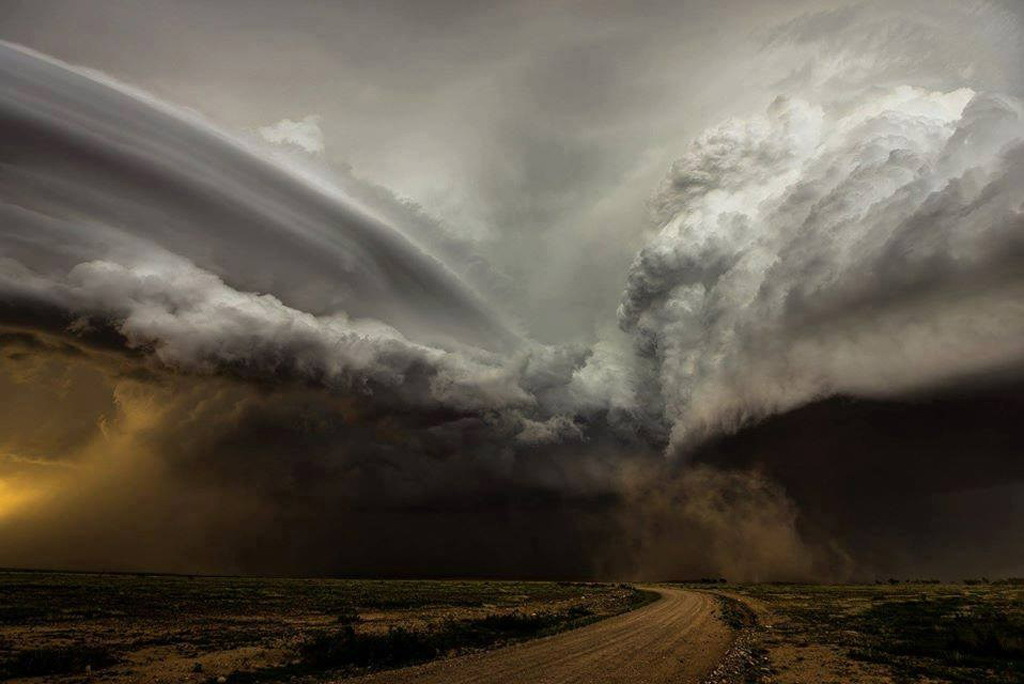
Credit: Camelia Czuchnicki
Storms
Two stormy whirling air masses collided over New Mexico, each with their own swirling updraft. The older storm has curved lines running through the clouds while the newer is still roiling with new convection currents. The image was a winner in the Weather Photographer of the Year competition.
BONUS:
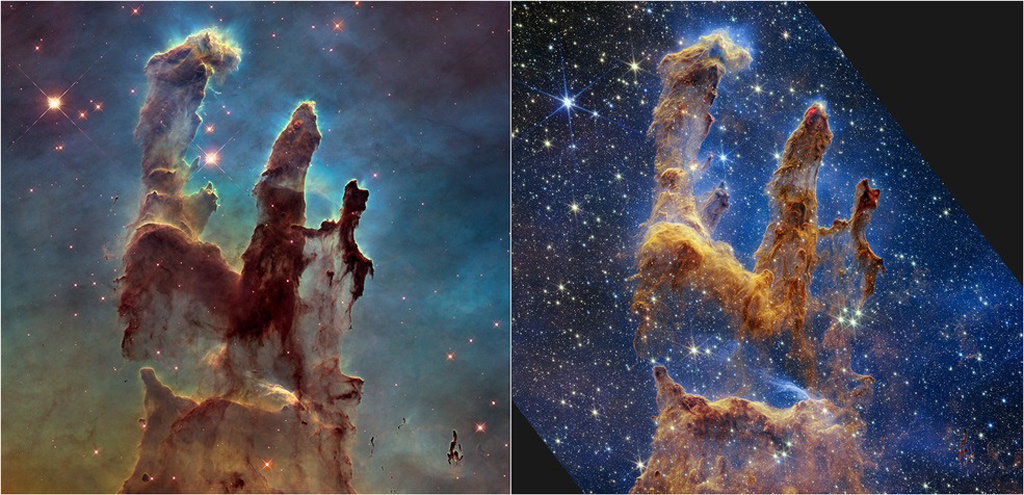
Credit: NASA, ESA, CSA, STScI; Joseph DePasquale (STScI), Anton M. Koekemoer (STScI), Alyssa Pagan (STScI)
NASA’s Webb Takes Star-Filled Portrait of Pillars of Creation
NASA's Hubble Space Telescope made the Pillars of Creation famous with its first image in 1995, but revisited the scene in 2014 to reveal a sharper, wider view in visible light, shown above at left. A new, near-infrared-light view from NASA’s James Webb Space Telescope, at right, helps us peer through more of the dust in this star-forming region. The thick, dusty brown pillars are no longer as opaque and many more red stars that are still forming come into view.
Friday, October 21, 2022
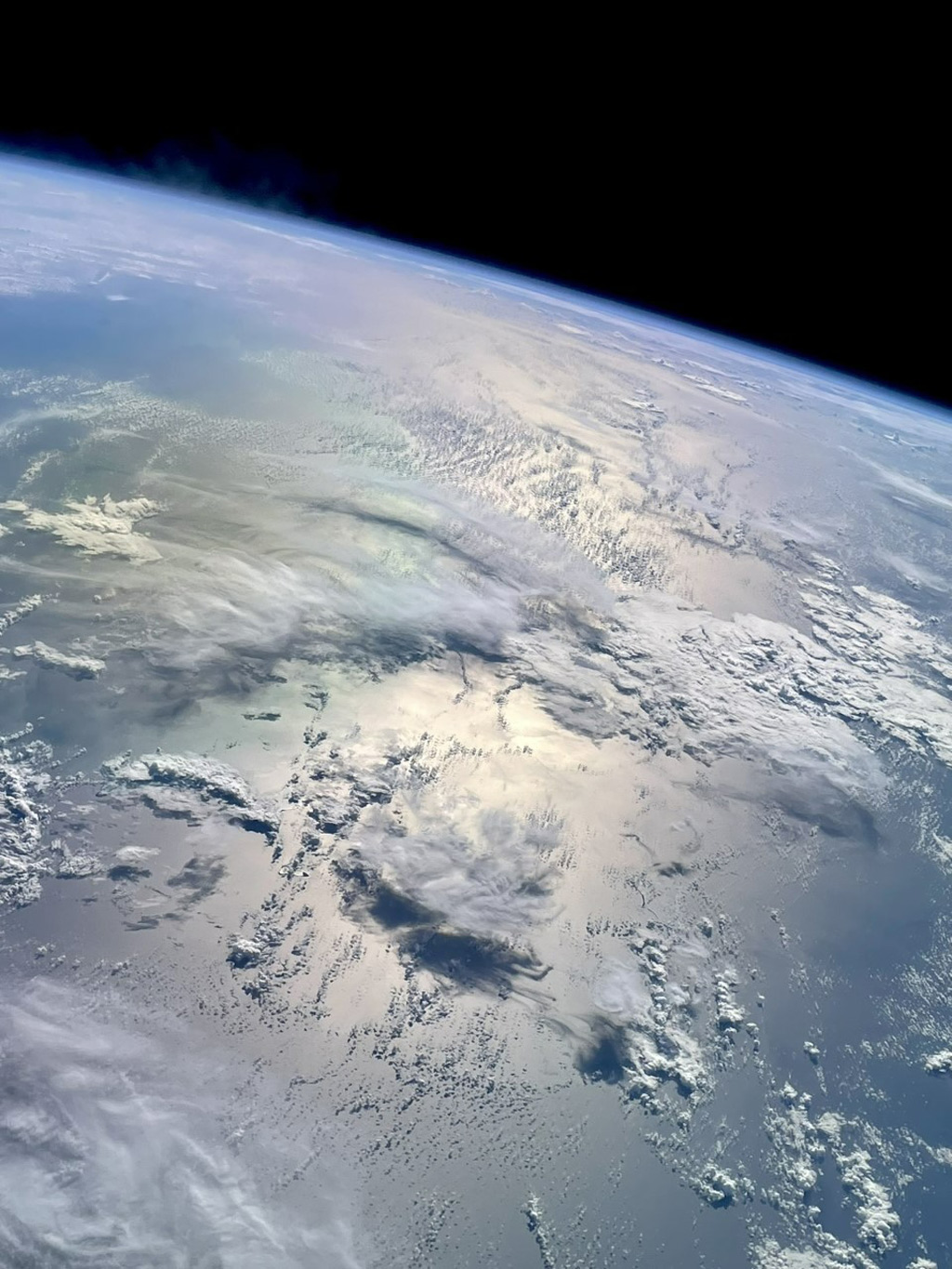
Credit: Hayley Arceneaux
Earth from Above
This image of our beautiful Pale Blue Dot was actually captured with a smartphone while traveling at approximately 28,000 kph. Taken by Hayley Arceneaux during the Inspiration 4 commercial spaceflight mission.





